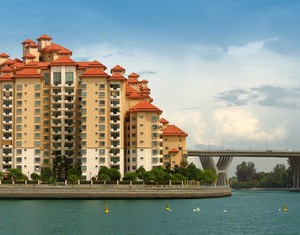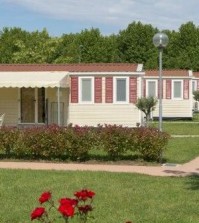- 4 Unexpected Things I’ve Learned From Buying My First Mobile Home Park
- How Ironic: America’s Rent-Controlled Cities Are Its Least Affordable
- U.S. homes are still a bargain on the international market
- Getting The Best Possible Quality Photos On MLSs and Syndicated Sites
- Home buyers in these markets have the upper hand
What Should I Buy? Single Family Home, Condo, or Multi-Unit?

For years, I sort of regretted buying a single family home in San Francisco instead of a multi-unit property.
Even though the idea was to grow into this four bedroom home, it felt wasteful during the meantime with only the two of us. So I finally decided to rent out the ground floor bedroom to a middle school teacher for below market rent. I’ve always had a soft spot for teachers, and it felt good helping someone who made less than $36,000 a year find a place in a good neighborhood within walking distance from work.
With the money I spent on buying the house in 2004/2005, I could have bought a two-unit building with a 1,300 sqft, 2/1.5 apartment upstairs and a similar size 2/1.5 apartment downstairs. I could have lived in one unit and rented out the other unit for maximum efficiency and profits, perhaps to the tune of an extra $150,000 – $300,000 over 10 years. Furthermore, having smaller units would provide more flexibility to accept new job opportunities – like the large offer in NYC I turned down – because of my perception at the time that it would be easier to rent out a 2/1.5 condo vs. a 4/3.5 SFH.
Then I rented out my whole house and had a change of heart.
DECIDING BETWEEN AN SFH, CONDO, OR MULTI-UNIT APARTMENT
Conventional wisdom says that if you can afford a single family home, buy a single family home because they tend to decline less in a correction and rise more in a bull market. You have more opportunity to expand a single family home, whereas you’re stuck with the footprint of a condo. If you cannot afford to buy a SFH, then buy a condo, co-op, or TIC.
For those who have a small family, or no family, and are looking for the greatest financial returns, buy a multi-unit property. The idea is that by splicing out your property, you can maximize rental income because there is a declining rental return on the number of bedrooms.
For example, a one bedroom apartment might rent for $3,500 in San Francisco, but a two bedroom apartment of similar quality isn’t going to rent out for $7,000. The two bedroom apartment will probably rent out for $4,500 – $5,500. Meanwhile, a three bedroom apartment of similar quality will probably rent out for $6,500 – $7,500 instead of $3,500 X 3 = $10,500.
In other words, from a landlord’s perspective, it may be best to own many smaller units in one building to earn as much money as possible. From a renter’s perspective, you get most bang for your buck renting a larger unit with multiple roommates.
Everything sounds logical right? I thought so until I decided to maximize my passive income by renting out my house and purchasing a smaller house in 2014.
Here are the details of my SFH rental property:
Number of bedrooms: 4
Number of bathrooms: 3.5
Property type: single family home
Mortgage: $4,300 a month ($2,200 is principal, $2,100 is interest)
Property taxes: $1,600 a month
Insurance + Misc: $300 a month
Total Cost: ~$6,200 (~$4,100 net after deductions, and $1,900 after principal)
Rent: $8,700 a month
Number of tenants: 4
From a gross cash flow perspective, I would need to rent out the house for at least $6,200 a month to break even. From a net cash flow perspective after deducting mortgage interest and property taxes, I would need about $4,100 to break even. And given $2,200 of the $4,300 mortgage pays down principal, I would need about $1,900 a month to completely run in place with a $2,200 principal pay down offset by a $2,200 cash flow loss every month.
During the depths of the financial crisis, rent for my house was in the mid-$6,000 range. I know this because I was in cost cutting mode and wanted to see how much I could get if I had to rent out my house and move back home to Hawaii. A Bank of America exec offered $6,500, which I ultimately turned down. There was no way I was selling any assets during the crisis if I didn’t have to.
I never would have imagined being able to rent out my house for close to $8,000, but after doing some market research and seeing large three bedroom condos asking $8,500 in nicer parts of my neighborhood, I figured I’d list at $8,400 and see what would happen. It turns out demand was so strong that my existing tenants agreed to a $300 increase to $8,700 for one year.
The gross cash flow is therefore $2,500 a month, and $4,700 a month being added to my net worth since $2,200 of my mortgage is to principal. There’s also non-cash amortization costs, which further lowers the tax bill.
What If I Bought A Two-Unit Building Instead?
If I divide $8,700 by two, I get $4,350. $4,350 is roughly in the ballpark for a 2/1.5 in the northern part of San Francisco. The 80% range is anywhere from $3,800 – $5,000 a month for similar quality condos based on my Craigslist search. I also own a 2/2 condo in a good location charging $4,000 a month, so I’m very familiar with the 2/X condo market.
I just said that landlords should be able to extract a higher rent for smaller units. So how is it that $8,700 a month for a 4/3.5 SFH has a similar rent than two 2/1.5 condos? Well, I could be losing $1,300 a month owning a SFH since the upper range for a 2/1.5 condo is around $5,000 ($5,000 X 2 = $10,000 – $8,700 = $1,300).
But here’s the kicker. As a 38 year old who no longer has the same amount of energy dealing with people, and who has discovered creating online products as the best form of passive income, I’m very happy I don’t have two sets of people to deal with! I’d happily accept $1,300 a month less in rent to not have to spend 2X the time dealing with tenant issues. The older we all get, the more we want to just simplify life.
Right now I’ve got one master tenant, who electronically auto-pays the SFH rent every month. The master tenant is also responsible for keeping the house in proper shape and coordinating with me whenever there are any issues. The process is simple, despite there being four people in the house.
If I had two condos to rent out, the responsibilities would more than double. I’d have to deal with two separate checks, two kitchens, two water heaters, two electrical grids, two sets of floors, and so forth. There’s no guarantee there would only be two people in each 2/1.5 condo either. There could be a family of three or four in each unit, making the total two condo occupancy 6-8 vs. 4 for my house. Furthermore, I’d probably have to deal with a lot more turnover, especially if the two people living in each condo are not a couple.
I can comfortably estimate that having two units is at least double the work because I own a condo elsewhere in the city. The tenant is fine, but she’s had a revolving door of roommates in the only two years she’s been there. It takes time to vette a new tenant, coordinate with the building to let them move in, go over the association rules, collect a deposit, change the directory, etc.
SINGLE FAMILY HOME EFFICIENCIES
The ease of maintaining a single family home compared to a multi-unit building is a huge attraction for small time landlords like myself who don’t employ property managers. The older and wealthier we get, the less we want to deal with other people and the less we care about money.
I still think buying a multi-unit property with the intention of living in one unit and renting out the other units is a solid hybrid move that will likely maximize your returns. It’s just better to do so while you’re younger. Being a live-in landlord means your tenants will probably be more respectful with you in the building, and it’ll be much easier for you to coordinate maintenance.
For me, having more than 1,000 square feet of living space per person was too much. It feels wasteful, like having too many clothes you don’t wear sitting in the closet while some families freeze during the winter because they don’t have enough.
Buy property for a better lifestyle first, rental income second, and capital appreciation third. You might not be able to get maximum rental income if you ever decide to rent out your home and buy another great place, but the benefit of enjoying your money far outweighs the benefit of trying to make more money with money.
Which Investment Property To Buy Recap:
* Single Family Homes usually provide better capital appreciation, more expansion potential, more tenant type flexibility, and potentially less tenant turnover. Downside includes more hands-on maintenance, and a lower rental income yield. For those who would like to live in the home, make improvements, and then rent out the home, a SFH is the best investment property.
* Condos are generally cheaper to acquire and may provide a higher rental income yield. Downside includes HOA fees and HOA regulations that may restrict rental freedom and reduce rental profits. You’re the king of your condo, but not king of the common domain. For those who cannot afford a single family home, or who like spending less time on maintenance should consider a condo.
* Multi-unit properties provide maximum rental yield income and a high amount of tenant type flexibility. The main downside is potentially higher turnover rates and much more active management by the landlord. Also check for rent control laws. In San Francisco, multi-unit properties are under rent control, but SFHs and condos are not. For those who have more energy and more time, multi-unit properties are the way to go.








 100% Secure
100% Secure
You must be logged in to post a comment Login